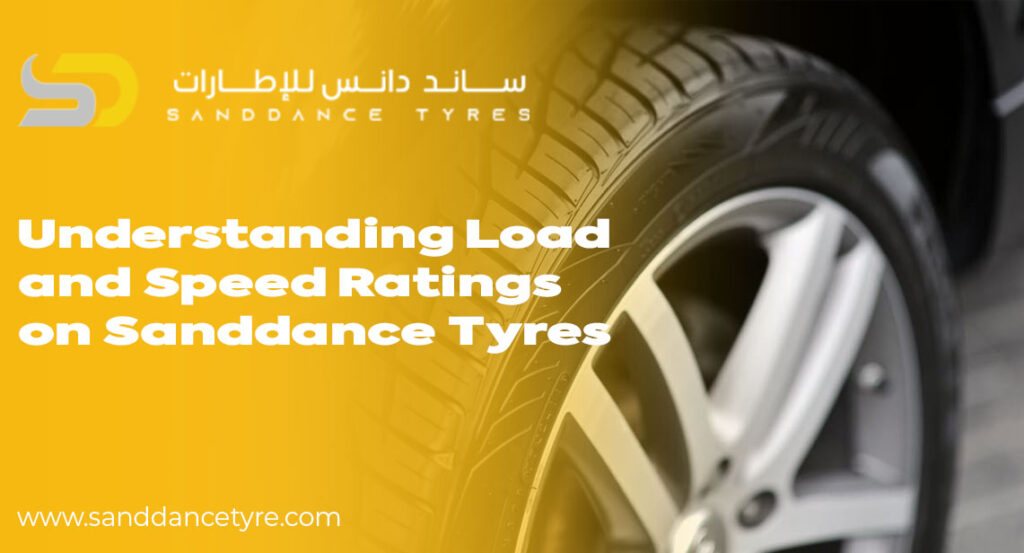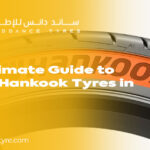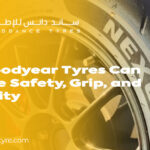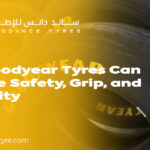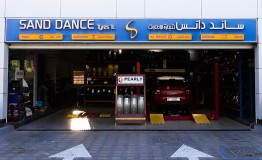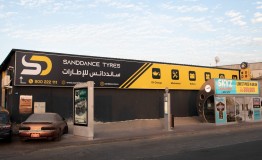Understanding Tyre Load Speed Ratings on Sanddance Tyres
It’s important to match the tyre load speed rating to your driving requirements in addition to size and tread pattern when selecting the appropriate tyre for your car. At Sanddance, we prioritize safety and adherence to global standards in addition to performance and longevity.
You can make an informed choice and guarantee that your car operates safely and effectively in a variety of driving situations by being aware of what load and speed ratings mean. Let’s examine these important numbers and symbols that you may see on your Sanddance tyres.
Tyre Load Speed Rating: What Is It?
Two parts make up a tyre load speed rating:
- The maximum weight that each tyre can support is indicated by the load index.
- The speed symbol indicates the fastest speed at which the tyre can be used safely.
Both are located on the sidewall of the tire and usually correspond to the size code (205/55 R16 91V, for example). The load index in this instance is “91,” while the speed rating is “V.”
Vehicle performance, handling, and—above all—safety regulations are all significantly impacted by these variables.
How much weight can a tyre support? An explanation of the load index.
A numerical designation is known as the load index indicates the tire’s carrying capacity. Each figure represents a certain kilogram weight restriction. For instance:
- Index of Load 91 = 615 kg
- Index of Load 95 = 690 kg
- 800 kg is the load index of 100.
This figure need to be at least as much as the weight your car puts on each tire. Underloading can lead to tire failure, particularly when big loads or fast speeds are involved.
To assist customers with choosing the best tires for their vehicle class—whether it be sedans, SUVs, or commercial vehicles—sanddance ratings are prominently shown.
Comprehending Speed Symbols: What Is Your Maximum Speed?
The maximum speed that a tyre can sustain safely while carrying its maximum weight is indicated by the speed symbol. Every letter denotes a different pace, like:
- S = 180 km/h
- T = 190 km/h
- H = 210 km/h
- V = 240 km/h
- W = 270 km/h
Selecting tires with a speed rating that matches or exceeds your car’s top speed is crucial. Sanddance provides a large selection of tyres that cover all typical speed symbols, guaranteeing both safety and adherence to international standards.
Why Your Safety Depends on Load and Speed Ratings
The significance of matching tire ratings to vehicle specifications is often overlooked by drivers. This is why they are important:
- High-Speed Safety: Inaccurate speed ratings may result in diminished control or blowouts.
- Proper Load Handling: Tire bursts, tread separation, and overheating can result from overloading tires.
- Validity of Warranty: Manufacturer warranties may be nullified if tires are used above their load/speed rating.
Sanddance tires are made to achieve or beyond these crucial ratings while adhering to stringent safety regulations. We have options in our range that are appropriate for different road conditions, climates, and performance requirements.
How to Interpret Sanddance Tyre Load and Speed Ratings:
An Example 225/50 R17 98H 225: Tyre width in millimetres
- 50: Aspect ratio (width as a percentage of height)
- R: Construction in a radial pattern
- 17: The wheel’s diameter in inches
- 98: Index of load (750 kg)
- H: Rating for speed (210 km/h)
Knowing this code enables you to select the appropriate tyre for the job. Sanddance offers a suitable solution whether you drive on roads, off-road trails, or in metropolitan areas.
How Sanddance Guarantees Accurate Ratings
Each Sanddance tyre is put through a rigorous examination and testing process to make sure:
- Correct labelling of the load index and speed symbol
- adherence to international safety regulations
- Adaptability to a variety of automobiles
- Dependability under harsh and real-world circumstances
In addition to their performance, our tires are designed to provide drivers the assurance that their car can withstand the rigors of the road.
Conclusion: Use Sanddance to Make Wise and Secure Decisions
Understanding your tire’s load and speed rating is essential to both vehicle performance and safety; it’s not just technical jargon. Drivers who value carrying capacity, maximum speed stability, and long-term dependability trust Sanddance tires because they are precisely constructed, supported by international standards, and reliable.
Knowing the important specifications will help you make the right decision; your comfort, safety, and peace of mind are all on the line.
FAQs
Question 1: What occurs if I use a tire that has a lower speed rating than what is advised?
Using a lower speed rating might increase the risk of an accident, decrease control, and induce tyre breakdown at high speeds. Always adhere to or surpass the manufacturer’s recommendations for the vehicle.
Q2: Is it possible to install a tyre with a higher load index than what my automobile needs?
Yes. Although a higher load index is permissible, be sure that the extra stiffness of the tyres doesn’t compromise fuel efficiency or ride pleasure.
Q3: Are Sanddance tires appropriate for fast driving?
Indeed, Sanddance provides a variety of high-speed tyres, such as V, W, and Y-rated tyres for performance cars.
Q4: Does fuel economy depend on load and speed ratings?
Yes, rolling resistance and fuel consumption can be affected by using tyres that are outside of the approved rating range. Sanddance tyres are made to strike a balance between efficiency and performance.
Q5: How frequently ought I review my tyre ratings?
When replacing tyres or if you’re not sure about your current tyres, check the ratings. For easy visibility, they are stamped on the sidewall.


